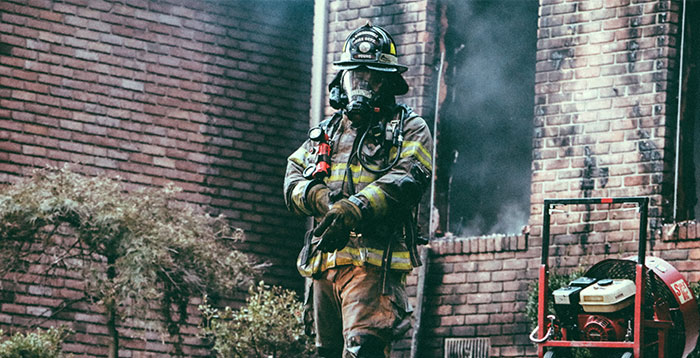Specialist materials, insulation and compartmentation are all used to make buildings safer – but why can’t buildings be made completely fireproof?

Specialist materials, insulation and compartmentation are all used to make buildings safer – but why can’t buildings be made completely fireproof?

Fireproofing is a type of passive fire protection – where materials are treated in a way to reduce their susceptibility to fire. But calling it “fireproofing” is a little disingenuous.
There’s no material in the physical world that can’t be destroyed by heat.
Given enough encouragement, anything can be burned, melted, turned to vapour, plasma or reduced to its subatomic constituents – and although achieving that kind of temperature in a high-rise fire is unlikely, most tall buildings could burn for long enough to generate hellish temperatures; hot enough to melt lead, zinc and even some aluminium alloys.
While that alone couldn’t bring a building down, temperatures in excess of 600ºC are incredibly dangerous to life, and the smoke and vapours produced in such heat are unsurvivably toxic.
Practically speaking, buildings made today are as good as fireproof, thanks to the materials and techniques used in construction and design. But not every building in our environment is new. Many of the structures we live and work in today carry a legacy – and without modernised fire protection, we could lose more than just the buildings themselves.
Not once in its 200 year history had the building in Rio de Janeiro been fully renovated. It had suffered serious cuts in funding, causing much of the contents of this grand structure to fall foul of termites and excessive drying. Not for the first time, an historic site of national importance was destroyed by fire – because it hadn’t been cared for or fitted with even the most basic fire protection.
Thankfully, there was no loss of life – but centuries of ancient knowledge and culture have been lost. Hundreds of millions of years of biological history have been turned to dust. And while the building itself still stands, stonework has cracked and ceilings have caved. The roof is gone. The damage could be irrecoverable.
And that’s before considering the irreplaceable treasures within. They’re are all but lost: a large meteorite discovered in 1784 survives alongside perhaps 10% of the specimens kept at the museum.
Brazil has lost 200 years of significant work and history. It’s a tragic blow to the country and generations not yet born. It’s a terrible reminder that we must invest making our buildings, old and new, able to resist the devastation of fire.
Even if every building in the world were to be made completely impervious to fire, the things put inside them wouldn’t match. Invincible homes and offices full of paper, wood and plastic would simply become giant ovens in the event of a fire.
The real aim of the game is to delay the progress of fire, so that ruinous infernos can’t be reached before help arrives. Fire resistant materials are given time ratings, which act as guidelines to how long they can be exposed to heat before they fail.
And thankfully, we have materials that resist fire, and techniques to halt its spread.
Compartmentation is now considered a staple of building design – and it can either be built into the structure as a passive form of protection, or added in as active fire protection. Fire curtains are the most effective way to compartmentalise open plan and heritage buildings, as they can be custom made and fitted retrospectively.
Fire curtains and smoke curtains are made of fire resistant materials, which are given a time rating for maintaining integrity at 1,000ºC. After the rated time has passed, the material is liable to fail – but with ratings of up to four hours available in modern fire curtain design, escape and rescue potential can be greatly increased.
During a fire, every second is precious – and having enough time to find an exit before flames have spread is the priority of fire safety. Fire curtains are paving the way to a better, safer future – one where we may be able to stop fire dead in its tracks.
At Coopers Fire, we are always striving to develop fire safety standards. To find out more about our products and services, or to enrol in one of our educational training courses, call us on 02392 454 405 or email info@coopersfire.com.